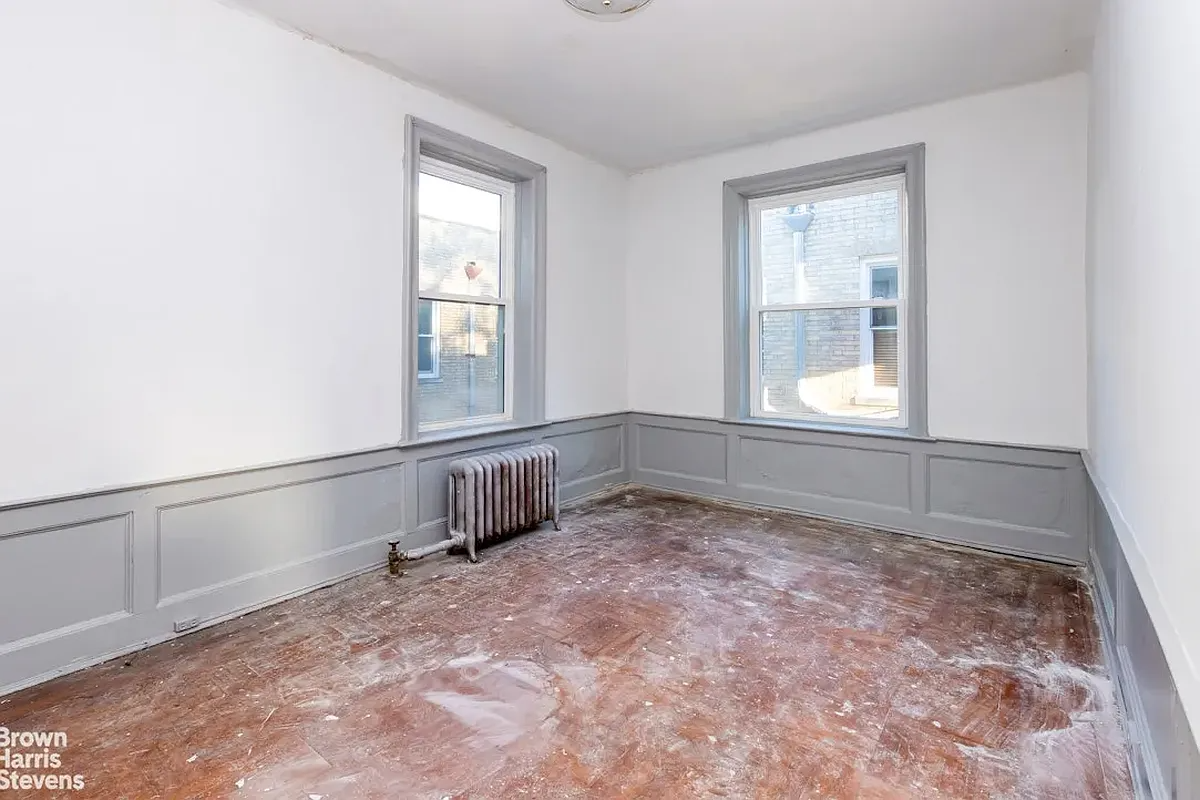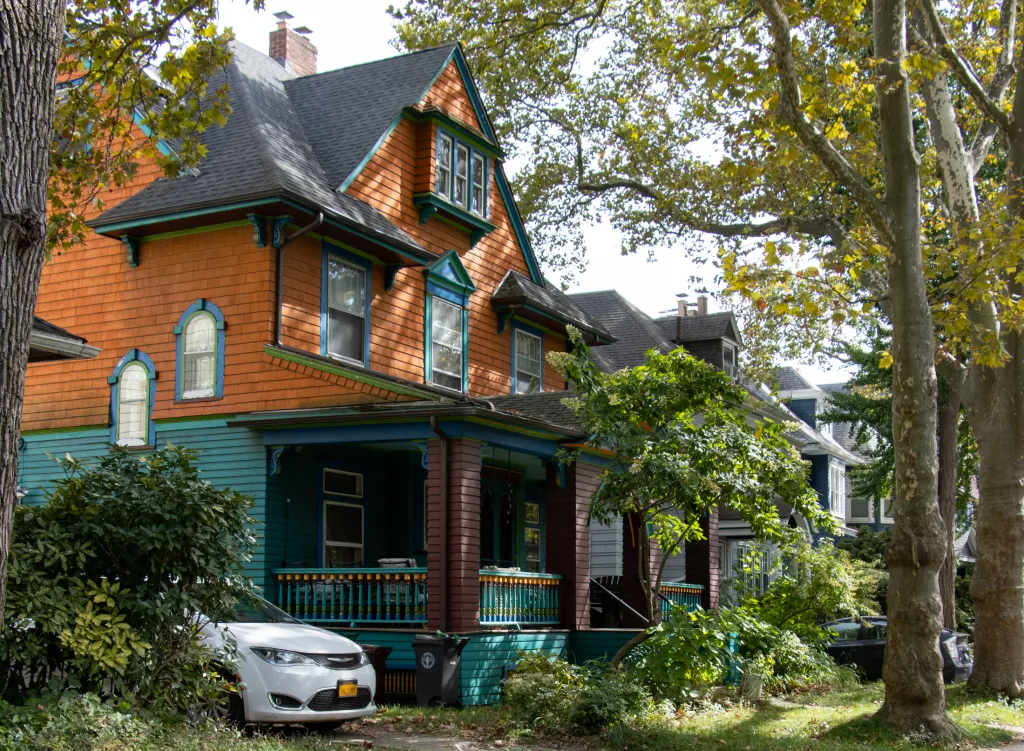'What's Wrong With Gentrification?' Asks New York Mag
This week New York Magazine takes a view on gentrification that is, if not contrarian, at least a little controversial. (The article follows a similar one in the semi-annual magazine n+1). As will come as no surprise to most readers, gentrification these days is treated as something of a dirty word. Why’s that? Mostly because…

 This week New York Magazine takes a view on gentrification that is, if not contrarian, at least a little controversial. (The article follows a similar one in the semi-annual magazine n+1). As will come as no surprise to most readers, gentrification these days is treated as something of a dirty word. Why’s that? Mostly because it conjures up associations of, as n+1 wrote, “the forced displacement of the urban working class by mobile, college-educated professionals.” This may be more myth that fact though: In his recent book There Goes the ‘Hood, Columbia urban planning prof Lance Freeman found that poor residents and those without a college education were actually less likely to move if they resided in gentrifying neighborhoods” and that “the discourse on gentrification has tended to overlook the possibility that some of the neighborhood changes associated with gentrification might be appreciated by the prior residents. In other words, the rehabilitation of an old house or the opening of an upscale bakery isn’t necessarily a zero-sum game in which the long-time residents are lose out. Not only that, claims the New York Magazine article, but gentrification is the only hope that many urban centers have of saving themselves: “The ailing cities that save themselves in the 21st century will do so by following Brooklyn’s blueprint,” the article says in closing. “They’ll gentrify as fast as they can.”
This week New York Magazine takes a view on gentrification that is, if not contrarian, at least a little controversial. (The article follows a similar one in the semi-annual magazine n+1). As will come as no surprise to most readers, gentrification these days is treated as something of a dirty word. Why’s that? Mostly because it conjures up associations of, as n+1 wrote, “the forced displacement of the urban working class by mobile, college-educated professionals.” This may be more myth that fact though: In his recent book There Goes the ‘Hood, Columbia urban planning prof Lance Freeman found that poor residents and those without a college education were actually less likely to move if they resided in gentrifying neighborhoods” and that “the discourse on gentrification has tended to overlook the possibility that some of the neighborhood changes associated with gentrification might be appreciated by the prior residents. In other words, the rehabilitation of an old house or the opening of an upscale bakery isn’t necessarily a zero-sum game in which the long-time residents are lose out. Not only that, claims the New York Magazine article, but gentrification is the only hope that many urban centers have of saving themselves: “The ailing cities that save themselves in the 21st century will do so by following Brooklyn’s blueprint,” the article says in closing. “They’ll gentrify as fast as they can.”
What’s Wrong With Gentrification? [New York Magazine]
Photo by kathyylchan





When I bought in eastern Clinton Hill in 1988, some of my neighbors referred to my presence as “gentrification.” Why? Perhaps because I paid what was then the highest price for a (beautiful) house on a block close to good transportation? Who knows – to me (having saved for years to afford the down payment) it was worth it. I displaced noone, and the prior owner was happy about getting a good price. I joined the block association, and the term seemed to disappear. Now I’m an oldtimer watching the new wave of buyers and listening to concerns about gentrification. Plus ca change…
MM you are quite right. A neighborhood is about people. However, I think it is just reality that sometimes prices in an area increase and certain people get priced out of a market. As I say, what’s the alternative?
I lived in Park Slope for several years. For what we got, my wife and I thought it was too expensive. We moved. No, I hadn’t been there for 100 years, and we were not “priced out” strictly speaking, but thems the breaks. The little old lady who bought her brownstone fifty years ago will sell it for $2 million, move to Florida and live her remaining days like a queen. As someone else mentioned above, should we begrudge her that money? Should she have been forced to sell to someone — what, more in keeping with the character of the neighborhood? — for less than she could get on the market? When the rubber hits the road, what we’re talking about here are property rights.
To impose our collective will on a property owner to get the type of neighborhood “we” want, somebody’s got to pay in the form of the state putting conditions on their property rights, be it rent control or otherwise (I would put landmarking in this category as well). I’m not saying that’s always a bad thing, but it is what it is.
Essentially, as I see it, anti-gentrification is about not liking yuppies (and in some neighborhoods hispters too I guess). Technically I am a yuppie, and, yes, we suck. We like expensive coffee and Maclaren strollers. We’re self-entitled and obnoxious. But we also pay taxes and we won’t mug you, so unfortunately the old timers will have to live with us.
Rob (Butterfly):
To argue that cheap bodegas that have been replaced by “foo-foo” markets is a bad thing is wrong on many levels. Studies have been done comparing prices and offerings in those bodegas to supermarkets and “foo-foo” markets which clearly show that the bodegas charge more for food and goods that are older (often past expiration), and often don’t carry healthy options at all. The lack of space in those bodegas also makes buying in bulk impossible which further increases prices. Essentially those bodegas have been ripping off the poor communities that they serve because there are no other options offering quality products to compete with them.
Columbia negotiated with and reached deals with I beleive 95% of the private owners in the footprint of their expansion plan. Private negotiation = market price
“Change is indeed a fact of life, but we can use our brains and our institutions to try to affect that change in a manner we feel more appropriate for ourselves and our communities. You can’t stop it, but you can try to steer it and mold it for the better. I’m with Montrose.”
Which we already do – its called Rent Stabilization, aid to 1st time home buyers, social Security, Disability, low-moderate income development programs, graduated income tax, empowerment zones, medicare, etc, etc, etc….who says we do not try to mitigate the effects of capitalism or change….
Havelc-
How exactly were the “market rates” you speak of determined by Columbia? Free market arms length negotiation?
MM- the layering you refer is a direct result of the forces and factors jailbait articulates, and by definition CHN cannot become PS – because it is physically different, socially different and built different, therefore each factor will impact it different. Just like PS will never be Brooklyn Heights, etc….
Jailbaits accurate point is that there is nothing to debate – unless we resort to a total control economy (which would eventually change things more than anything else) – neighborhoods are going to change – new people will come (some may be wealthier, some maybe poorer) old people will stay, people will be born, people will die – there is nothing to “debate” – its called life!
Another piece of this puzzle is the disappearance of a true middle class. When a society is more evenly stratified, you’ll see services and price points to reflect the middle, but when you govern towards the most unfettered market possible and let capitalism work, you get mega-haves and mega-have-nots. Capitalism is a serious engine for growth, but not for equitable distribution of growth, and it plays out in all of our markets, especially housing and retail.
And I have to take issue with the idea that gentrification is a fact of life, so you might as well get used to it. Change is indeed a fact of life, but we can use our brains and our institutions to try to affect that change in a manner we feel more appropriate for ourselves and our communities. You can’t stop it, but you can try to steer it and mold it for the better. I’m with Montrose.
Jail bait, you may be correct in terms of dollars and cents, but isn’t a neighborhood more than that, just as it is more than bricks and mortar. If we are only the product of our wallets, then neighborhoods lose their character and become no more appealing than a newly built suburb. Crown Heights North is a layering of people and incomes, culture and history, built upon a prosperous upper middle class area of fine homes and churches. Each successive layer of people and incomes, fortune and misfortune has contributed to what CHN is, and while all neighborhoods are flowing and changing, the best retain the good while improving. I don’t want Crown Heights to become Park Slope. I think the difference may be that we learn from the past, and from other neighborhoods. Improvements and change and new people, even know-it-all, take-over types can be channeled in a way that doesn’t mean that a new group “takes over” any more than the old group refuses obvious improvements in order to stay “real”. We just need to learn to work together and learn from each other. It is possible to do.